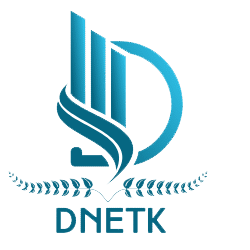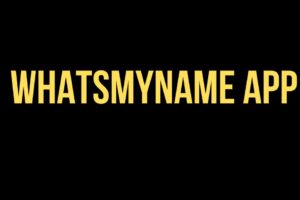In the sprawling, interconnected metropolises of the internet, our identities are fragmented across a hundred different platforms. We are our usernames: a quirky handle on Twitter, a professional tag on LinkedIn, a nostalgic gamertag on Xbox, a creative alias on Etsy. This digital diaspora offers freedom and expression, but it also creates a shadow—a trail of breadcrumbs that can be followed by anyone, with intentions both benign and malicious. For those facing online harassment, stalking, or impersonation, this fragmented identity becomes a vulnerability. In this complex landscape, a powerful, free, and community-driven tool has emerged as a critical line of defense: the WhatsMyName App.
Far from a simple username checker, WhatsMyName is a digital sleuth, a proactive guardian, and a testament to the power of open-source collaboration. It is a web-based application that allows users to search for a specific username across over 600 social media, gaming, financial, and professional websites. In an instant, it can paint a comprehensive picture of an individual’s digital footprint, revealing accounts they may have forgotten, or more importantly, accounts they never created in the first place.
The Genesis: A Tool Born from Necessity
The story of WhatsMyName is not one of corporate ambition, but of practical need. The project was created by Peter LaFond, a security researcher who recognized a gaping hole in the average user’s ability to manage their online presence. The initial goal was simple: to create a centralized engine that could automate the tedious process of manually checking if a username existed on various sites.
The project’s philosophy is deeply rooted in the principles of the open-source community. Its entire database of websites and the logic for querying them is publicly available on GitHub. This means that anyone—from seasoned security professionals to curious coders—can review the code, suggest improvements, and, most crucially, contribute new sites to be searched. This collaborative model is the engine of WhatsMyName’s success. As new social platforms and services spring to life, the community ensures the tool remains current, agile, and comprehensive. It is a tool by the people, for the people, untainted by monetization, data harvesting, or corporate interest.
How It Works: The Mechanics of Digital Reconnaissance
Using WhatsMyName is deceptively simple. A user navigates to the website, enters a username into the search bar, and clicks a button. Behind the sleek interface, a sophisticated process unfolds:
- The Query: The application takes the username and systematically sends HTTP requests to the list of hundreds of websites, appending the username to the standard URL structure of each site’s user profile page (e.g.,
https://www.twitter.com/[username]). - The Response Analysis: The tool doesn’t hack or breach any security. It simply reads the public response from the website’s server. It analyzes the HTTP status code returned. A “200 OK” status typically means a profile with that username exists. A “404 Not Found” means it does not. For some sites, it also analyzes the page content for specific keywords to confirm a profile’s existence or absence more accurately.
- The Presentation: Within seconds, the results are displayed in a clear, color-coded list. Green indicators show where the username was found, red where it was not. Each result is a clickable link, allowing the user to instantly visit the discovered profile.
This process, while technically straightforward, aggregates a task that would take an individual hours, if not days, of manual labor into a matter of seconds. This efficiency is what makes the tool so powerful.
The Double-Edged Sword: Ethical Use Cases vs. Malicious Potential
Like any powerful tool, WhatsMyName exists in a moral gray area. Its utility is entirely dependent on the intent of the user. To understand its impact, we must examine both sides of the blade.
The Force for Good:
- Cybersecurity and OSINT (Open-Source Intelligence): For security professionals, journalists, and law enforcement, WhatsMyName is an invaluable OSINT tool. It can help trace the activities of threat actors, verify the online presence of sources, or investigate criminal networks by linking aliases across platforms.
- Combatting Harassment and Stalking: For victims of online abuse, the app can be a lifeline. It allows them to see the full scope of their digital footprint, identifying fake profiles created by harassers to impersonate, defame, or further torment them. This information is crucial for reporting the abuse to platforms and law enforcement, providing concrete evidence of a coordinated campaign.
- Personal Digital Hygiene: For the average internet user, it serves as a powerful audit tool. We all have old accounts on forgotten forums or early social media sites. These dormant accounts can become security risks if they use old, compromised passwords. WhatsMyName helps individuals identify and delete these digital ghosts, tightening their overall security posture.
- Brand and Reputation Management: Companies and public figures can use the tool to monitor for impersonation accounts or to secure their brand name across emerging platforms, protecting their reputation and intellectual property.
The Potential for Misuse:
The very features that make it a guardian also make it a potent weapon for those with ill intent.
- Doxxing: Malicious actors can use the tool to aggregate a target’s online presence from various platforms, collecting pieces of personal information (doxxing) that can be used to threaten, intimidate, or incite real-world harassment.
- Stalking and Targeted Attacks: A stalker can use the app to build a comprehensive profile of their victim’s interests, social circles, and habits by piecing together their activity on platforms like GitHub, Goodreads, Spotify, or gaming networks.
- Reconnaissance for Social Engineering: By understanding which platforms a target uses, an attacker can craft more convincing phishing emails or social engineering attacks tailored to the victim’s specific online behavior.
This duality is an inherent feature of the tool, not a bug. WhatsMyName does not create new information; it simply makes publicly available information more easily accessible. The ethical burden, therefore, rests squarely on the user.
The Bigger Picture: Privacy in the Age of the Username
The existence and popularity of WhatsMyName force a critical conversation about digital privacy. It highlights a fundamental truth: your username is a form of identity. In a world fixated on data privacy, we often overlook the privacy implications of this simple string of characters.
The tool demonstrates that pseudonymity is not anonymity. Using a unique, quirky username across multiple platforms creates a digital fingerprint that is incredibly easy to follow. The very act of trying to be unique and consistent makes you more traceable. This is the central paradox of modern online identity.
WhatsMyName’s effectiveness is a direct indictment of the “public by default” culture that dominates many online platforms. While users can often adjust their privacy settings, the process is different for every site and often buried deep in menus. The default, however, is frequently to make profiles and usernames discoverable.
Practical Advice: Protecting Yourself in a Searchable World
Given the capabilities of tools like WhatsMyName, what can an individual do to protect their privacy?
- Audit Your Footprint: Use WhatsMyName on yourself. This is the first and most crucial step. Know what is out there.
- Embrace Username Diversity: Avoid using the same username across important accounts, especially those tied to your real identity (like email or banking) and those used for casual or anonymous forums. Compartmentalize your online personas.
- Tighten Privacy Settings: For each account you wish to keep, go through the privacy settings meticulously. Make profiles private, opt out of search engine indexing, and limit the information visible to the public.
- Delete Dormant Accounts: For accounts you no longer use, take the time to deactivate or delete them. This reduces your attack surface and cleans up your digital trail.
- Be Mindful of What You Share: Remember that even on a “private” account, your username, profile picture, and bio are often still public. Be cautious about the information you include in these fields.
Conclusion: More Than a Tool, A Necessary Mirror
The WhatsMyName App is more than just a clever piece of code. It is a mirror held up to our digital society, reflecting both our interconnectedness and our vulnerability. It democratizes a capability once reserved for technically adept investigators, putting the power of reconnaissance into the hands of everyone.
While its potential for misuse is a sobering reality, its value as a tool for protection, education, and accountability is undeniable. It empowers the vulnerable to understand and control their digital shadow and serves as a stark reminder that in the online world, our choices—from the username we select to the platforms we join—have lasting consequences.
In the end, WhatsMyName is not the problem; it is a symptom of a wider ecosystem where personal data is often too exposed. By illuminating this reality, it challenges us to be more thoughtful, more deliberate, and more secure in how we navigate the digital world. It is a humble yet powerful guardian in the vast, uncharted territory of the internet, proving that sometimes, the most impactful tools are those built not for profit, but for people.

